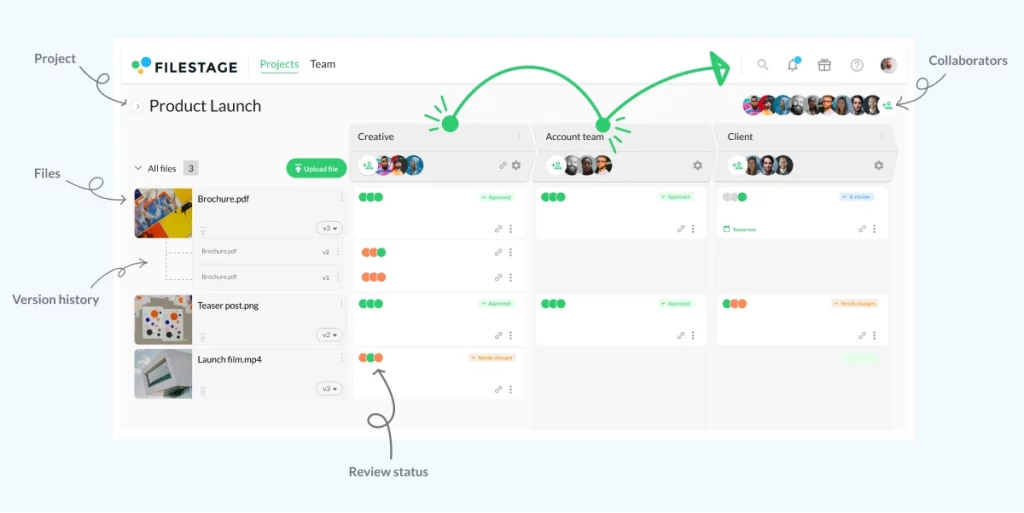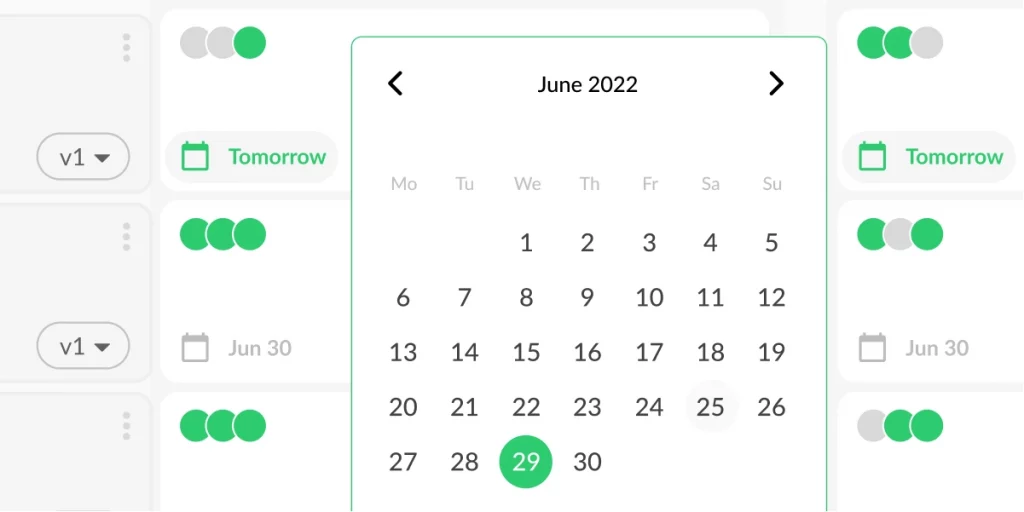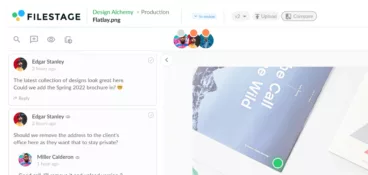Effective stakeholder communication is the cornerstone of successful projects. From occasional updates to frequent check-ins, regular communication keeps stakeholders informed, engaged, and more likely to support your project from start to finish.
But there’s no use sending information willy-nilly. Your approach to stakeholder communication should be planned, structured, and consistent.
That’s where a stakeholder communication plan comes in.
A stakeholder communication plan sets out how and when your stakeholders will receive information, and what’s expected from them in return. With a well-defined communication strategy, you can manage expectations, build trust, and reduce the risk of round-the-clock pestering for information.
Here’s the ultimate six-step stakeholder communication plan to keep stakeholders informed throughout your project.
But first…
What is a stakeholder communication plan?
A stakeholder communication plan is a structured approach to sharing information with the stakeholders involved in a specific project. Stakeholders are the people who have an interest in (or influence on) your project. These individuals or groups can be grouped into two categories:
- Internal stakeholders – Individuals or groups within your organization. They include members of your project team, project managers, members of other departments, and senior leaders.
- External stakeholders – Individuals or groups outside your organization. They include clients, customers, suppliers, and partners.
The purpose of a stakeholder communication plan is to make sure the right information is shared with stakeholders at the right time, to keep them informed, engaged, and supportive. An effective communication strategy is the best way to get the full support of your stakeholders for your project.
So now you know what you’re aiming for, here’s a six-step approach to creating the ultimate stakeholder communication plan.
1. Identify your stakeholders and break them into groups
The first step in your stakeholder communication plan is to identify your stakeholders (you may have already done this as part of your stakeholder management plan). These are the people that you’ll need to communicate with over the course of the project.
They might include internal and external individuals and groups, such as:
- Your project team
- Project managers
- Product teams
- Marketing teams
- Sales teams
- Legal teams
- Finance teams
- Senior management
- Clients
- Partners
Make a list of all the stakeholders that need to be kept in the loop, plus their contact details, so that you can keep them updated throughout your project.
Once you’ve got an extensive list of stakeholders, carry out a stakeholder analysis to understand them on a deeper level and to determine the level of communication they’ll want to receive – and how they’ll want to receive it.

Some questions you might want to consider include:
- Who are the key stakeholders for this project?
- What information will each stakeholder need to receive over the course of the project?
- How often do they need updates?
- Which communication channel(s) does each stakeholder prefer?
Use the answers to these questions to categorize stakeholders based on their interest, influence, and level of involvement. This will then help you to communicate with each stakeholder group more effectively.
2. Define the stakeholders responsible for feedback and approval
Defining the stakeholders responsible for feedback and approval upfront, before a project begins, is another crucial step in your stakeholder communication plan.
Many of your stakeholders will just need to be kept in the loop with project updates, but there will be certain individuals who’ll be required to give feedback and approval as the project progresses. These are the people that make sure your brand isn’t putting any false advertising claims out into the world.
Identifying key stakeholders in your stakeholder analysis will help you to determine who you need to go to for review and approval at each stage of the project. And setting these roles and responsibilities clearly upfront will help prevent confusion and conflict down the line.
It also helps to:
- Hold stakeholders accountable – Stakeholders know what’s expected of them and when, so they’re more likely to show up and provide timely feedback and approval.
- Streamline the decision-making process – When decision-makers are clearly defined, decisions can be made more efficiently, avoiding delays and bottlenecks.
- Reduce the risk of unnecessary delays and bottlenecks – When stakeholders are designated upfront, project teams can plan and schedule reviews and approval cycles, reducing the risk of unnecessary delays.
- Prevent others from jumping in – Too many cooks spoil the broth, and by clearly defining these stakeholders upfront, you prevent others from jumping in to give their two cents’ worth.
3. Set guidelines on the communication channels you’ll use to stay in touch
There’s little more chaotic than receiving comms via a range of channels. Not only can stakeholders (and you) feel bombarded, but it can be a nightmare trying to find key pieces of information when they’re spread across email, Slack, Teams, and who knows where else.
Before you kick off your project, set guidelines on the communication channels you’ll use to stay in touch with stakeholders. This keeps things consistent, reduces confusion, and streamlines the flow of information – avoiding the scattering of messages across different platforms.
The communication methods you choose will depend on your organization, stakeholders, and project. Look back at your stakeholder analysis to determine which communication methods to use for which stakeholder groups.
Here are some examples of what that might look like:
Project team
For your project team, you might choose to communicate on a Slack channel that you’ve set up specifically for this project. You might also have in-person or virtual stand-ups or check-ins, perhaps via Zoom or Teams.

Source: Microsoft Teams
Other internal stakeholders
For other internal stakeholders, the communication channels you choose might be another Slack channel, email, or other business communication software. You might also share updates at in-person or virtual town halls.

Source: Slack
External stakeholders
For external stakeholders, you might choose to keep all communication via email. You may also agree to conduct status calls via Zoom or Teams.
And when it comes to review and approval, you might choose to use a tool like Filestage to streamline the process.

4. Outline how frequently you plan to communicate
A big part of effective stakeholder engagement is managing expectations. After all, the last thing you want is for stakeholders to feel disappointed or question your ability to manage this project.
Outlining how frequently you plan to communicate helps to manage your stakeholders’ expectations so that they know when you’ll be in touch. This reduces uncertainty, as well as the risk of stakeholders feeling uninformed (and pestering you for information at all hours of the day).
Setting out your communication plan also helps you build trust with your stakeholders. When information is then shared as promised, they’re more likely to have confidence in your team’s ability to manage the project effectively and make informed decisions.
So how often should you be in touch?
This really depends on the scope of the project, the stakeholder group, and the project’s status.
You might agree to:
- Send a daily status update to your project manager and other key stakeholders
- Book a weekly status call with your client
- Send monthly updates to your senior leadership team
By outlining – and sticking to – a communication schedule with regular touchpoints, stakeholders are more likely to feel involved and engaged, and have faith in you, your team, and the project as a whole.

5. Clarify the type of information you’ll share
Different stakeholders will want different types of information shared with them throughout the project. For example, some might only be interested in progress updates. Others might want to be kept in the loop about challenges as they arise. And some will be keen to hear when you reach certain milestones.
Deciding on the type of information you’ll share with different stakeholder groups will help to make sure that content is relevant to the interests and needs of different stakeholders, which boosts stakeholder engagement.
Here’s why this is important:
- This targeted communication approach increases stakeholder engagement and satisfaction
- Sending the right information to the right people makes sure your communication efforts are as effective as possible and your communication objectives are met.
- Clearly outlining the types of information that will be shared helps manage stakeholder expectations.
- By specifying the types of information to be shared, you can avoid overwhelming stakeholders with excessive or irrelevant details, preventing information overload.
6. Specify how quickly a response is expected
It can be a nightmare waiting for stakeholders to get back to you when you’re desperate for a decision to be made. And it’s also just as annoying having stakeholders pestering you if you haven’t replied to their query in a matter of hours.
For this reason, your stakeholder communication plan should set out how quickly stakeholders can expect a response from you. And you from them. That might be 12 hours, 24 hours, 48 hours, or longer depending on the urgency of the project.
Setting realistic response times for all parties involved helps to manage expectations and reassures everyone that they’ll receive a reply within a certain timeframe.

What’s the difference between a stakeholder communications plan, a stakeholder engagement plan, and a stakeholder management plan?
I’m glad you asked! While these terms are related and often used interchangeably, they actually refer to different aspects of stakeholder relations in the context of a project.
Here’s a quick summary of each to help you understand the difference.
Stakeholder communications plan
A stakeholder communications plan focuses on the strategies and tactics for communicating information to stakeholders throughout the project. It outlines how information will be shared, the communication channels that will be used, the frequency of updates, and the types of messages that will be communicated.
Stakeholder engagement plan
A stakeholder engagement plan focuses on strategies for actively involving stakeholders in the project. It aims to foster stakeholder collaboration so that stakeholders play an active and meaningful role in shaping the project’s outcome.
Stakeholder management plan
A stakeholder management plan has a broader focus, addressing both stakeholder communication and stakeholder engagement, plus strategies for identifying and analyzing stakeholders. It also includes strategies for managing both supportive and challenging stakeholders and addresses how to deal with conflicts throughout the process.
Final thoughts
Stakeholder communication is vital for the success of a project. It keeps stakeholders informed, engaged, and supportive throughout. Which leads not only to group harmony, but ultimately to project success.
Take the time to create a clear and detailed stakeholder communication plan, and see how it helps with stakeholder relations, information flow, and the seamless running of your projects.







